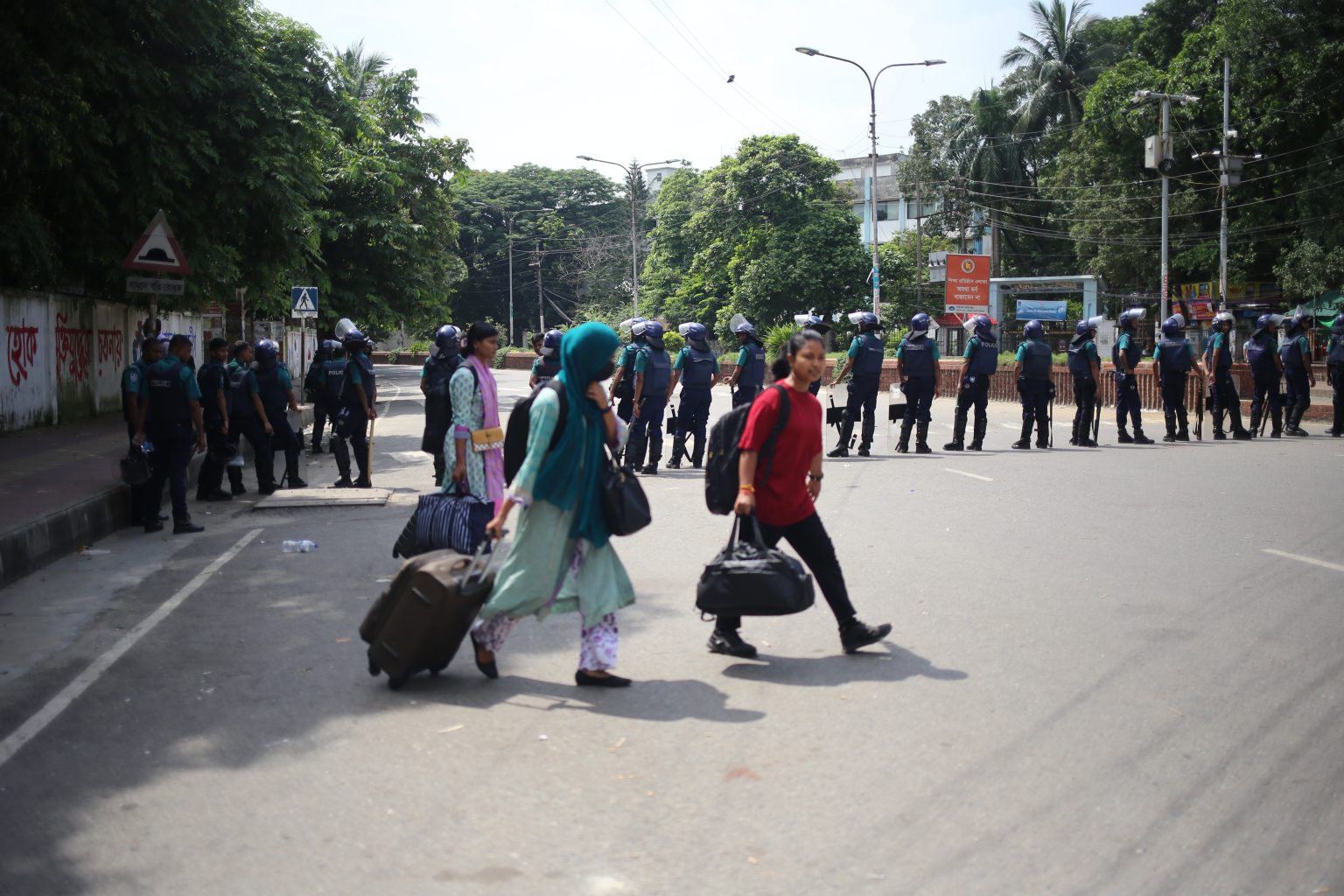On July 24 last year, the nation was gripped by fear and mourning as law enforcement continued a widespread crackdown, detaining over 1,400 people in just one day. This was part of a sweeping “combing drive” launched in the wake of violent clashes during the quota reform movement.
According to Prothom Alo, 641 of those arrested were from Dhaka alone—many identified as opposition party members, including those from BNP and Jamaat-e-Islami. With these arrests, the total number of detainees since July 17 surged past 4,500, raising serious concerns about human rights and due process.
Authorities defended the arrests. Then-Detective Branch Chief Harun-Ur-Rashid claimed the detentions were based on video evidence. Former IGP Chowdhury Abdullah Al-Mamun vowed to track down “miscreants” wherever they were hiding.
But the capital told a different story. Dhaka, along with several other districts, was under strict curfew for the fifth straight day. The government allowed a brief window—from 10 a.m. to 5 p.m.—for essential tasks. Streets, once filled with demonstrators and students, now echoed under the boots of police, RAB, and army personnel.
Despite the curfew, small-scale clashes erupted again as students protesting under the anti-discrimination movement held symbolic marches—mouths covered in black cloth, demanding justice in silence.
Tragically, the death toll from the unrest reached at least 201 that night. Among them was a Chittagong University student who succumbed to injuries while in treatment. Eight bodies remained unidentified. Without family to claim them, Dhaka Medical College Hospital was forced to bury them on July 24.
Hope flickered briefly when three missing student leaders—Asif Mahmud Shojib Bhuyain, Abu Baker Majumder, and Rifat Rashid—were suddenly released after five days in secret detention. Asif later described his harrowing time in what he called an “Ayna Ghar” (Glass House)—a shadowy detention cell emblematic, he wrote, of the ruling party’s authoritarian grip.
Meanwhile, long-distance buses resumed, launches left from Sadarghat, and offices opened for a few hours. But the mood was anything but normal.
That evening, then Prime Minister Sheikh Hasina met with senior editors at her Ganabhaban residence, urging calm. On the other side, student leaders issued an eight-point directive to keep the movement alive in a peaceful manner.
Globally, the situation did not go unnoticed. The US Pentagon publicly urged all parties in Bangladesh to show restraint, with spokesperson Maj. Gen. Patrick S. Ryder confirming they were monitoring events closely.
In an attempt to restore some transparency, the judicial inquiry commission formed to investigate six earlier deaths held its first meeting. They promised to visit the affected areas and seek public testimony—once it was safe to do so.
Finally, in a cautious move toward restoring normalcy, the BTRC allowed broadband internet back—at least on a trial basis. Mobile internet, however, remained blocked, leaving millions still disconnected from the world.
July 24 wasn’t just another date on the calendar—it was a day of pain, silence, defiance, and a deepening sense of uncertainty.


